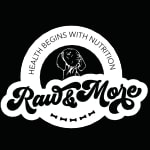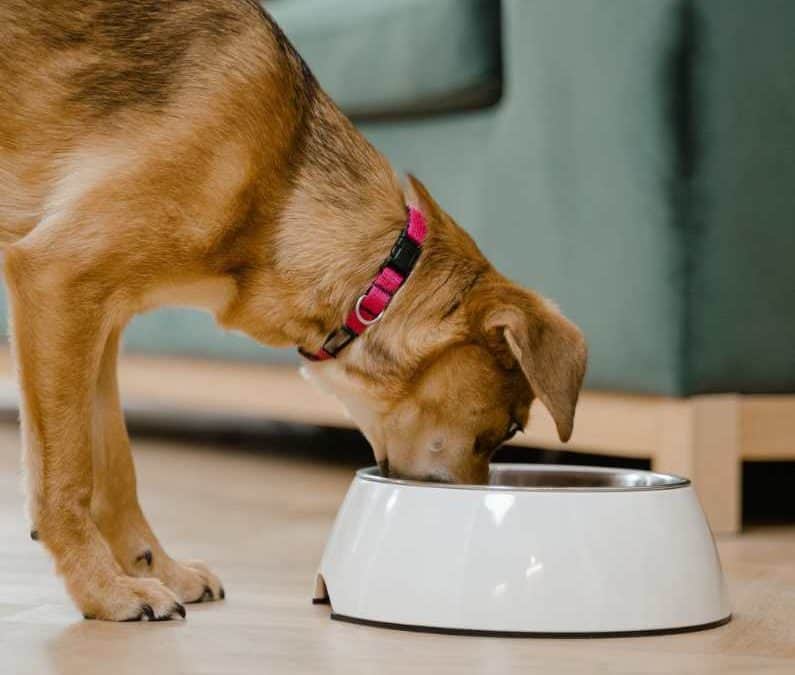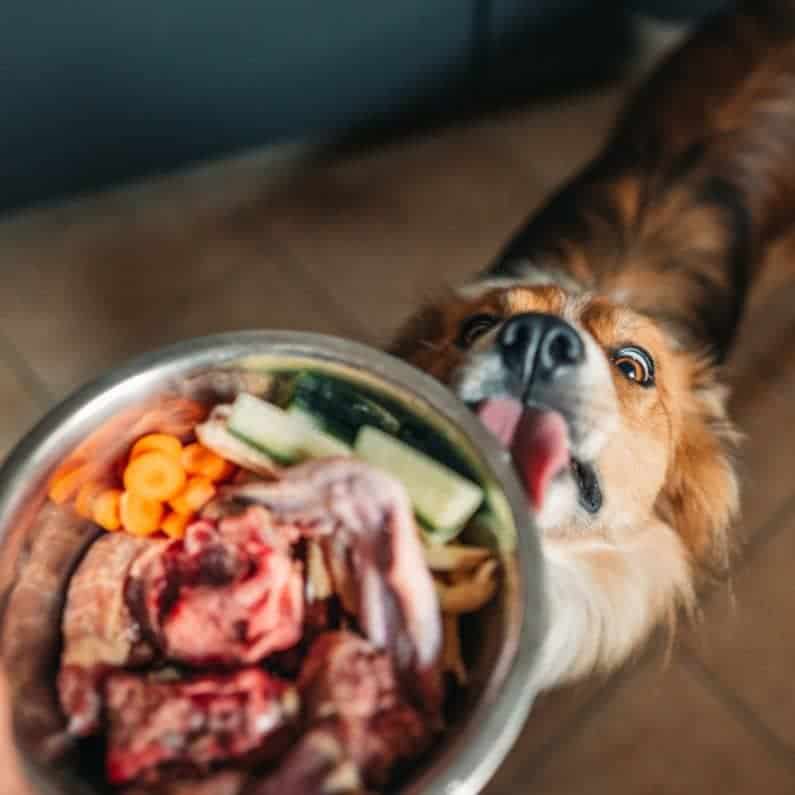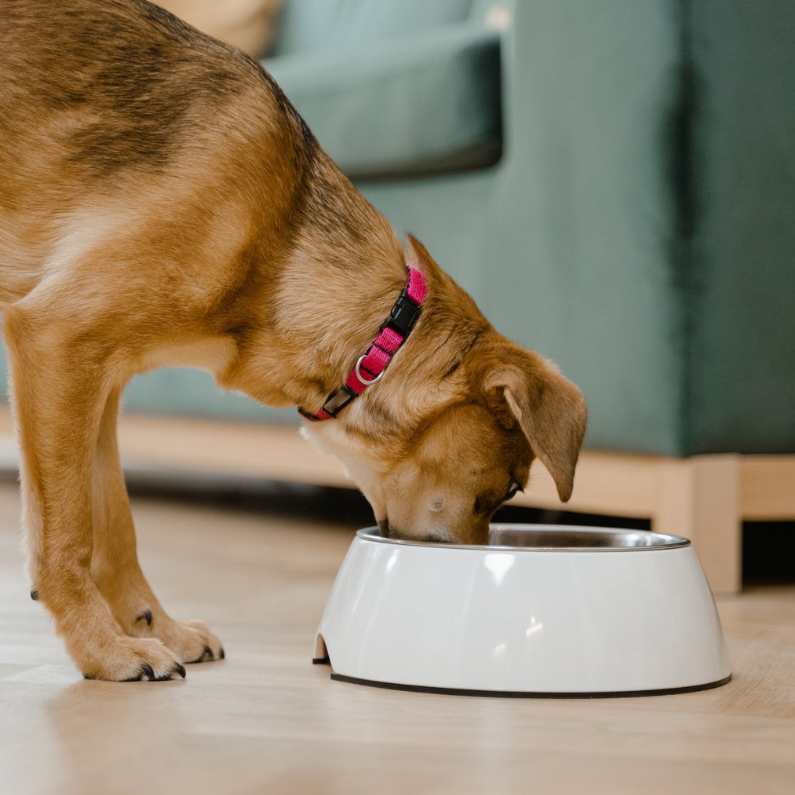Transitioning your pet to a raw food diet
The process of transitioning an animal from one diet to another can be a tricky one. Some animals adapt quickly and without much trouble, whereas others may find it very stressful and challenging. When transitioning an animal to a different diet, the general advice is to offer a small amount (around a small teaspoon) of the new diet separately from the original diet for a couple of days. After this, a small amount of the new diet can be mixed in with the original diet.
Improve your pup’s well-being one bite at a time
Gradually, the new diet can be increased in amount whilst decreasing the original diet accordingly. This process should generally take between 10-14 days. However, alternative methods are suggested for dietary changeovers, specifically for raw diets.
Owners should always consult their veterinarian before changing their diet. Your vet can advise on whether the transition process needs adapting for the individual pet’s needs and whether the new diet is appropriate.
Transitioning a dog from a processed diet onto a raw one is not a quick process, and the dog should never just be instantly changed over. Dogs require a gradual transition process to allow their stomach pH, intestinal microbiome, and digestive enzyme release to adapt. A gradual transition is also significant because a quick transition can lead to digestive upset and diarrhea.
When transitioning from one diet to another, the commonly used technique is to mix them in the same bowl more and more over time. However, some advise that there are better options for transitioning from processed to raw feeding.
Say goodbye to processed food: transition to raw in 7 days.
A different suggestion for raw transitioning is to feed the processed diet for one meal and then the raw food ration for the next, alternating at each meal. This alternating method should be done over a minimum of seven days, increasing the raw and decreasing the processed food until the diet is entirely raw.
Upgrade your pup’s diet with Raw and More!
Finally, remember that transitioning an animal to a different diet is a gradual process and should take place over several days, where you gradually increase the amount of the new diet and decrease the original one. Keep monitoring any issues or changes in your pet’s health and well-being. By following the advice and taking your time, you can ensure that transitioning to a raw food diet will be positive and successful for your dog!
If you have any questions, we are happy to help
See you in our store!
Embark on this exciting journey towards a healthier, happier life for your beloved furry companion. Join us now!
How to Balance Nutrients in your Pets BARF diet
The BARF diet for dogs is “Biologically Appropriate Raw Food” or “Bones and Raw Food.” It is a type of diet for dogs that emphasises feeding them uncooked and natural foods, typically consisting of the following components ...
Transitioning your Pet to a Raw Food Diet
The process of transitioning an animal from one diet to another can be a tricky one. Some animals adapt quickly and without much trouble, whereas others may find it very stressful and challenging. When transitioning an animal to a different diet ...
Four Benefits of Feeding your Pets a Raw Food Diet
With lower carbohydrate levels, raw meat diets reduce bacteria buildup in your pet’s mouth, promoting better dental health. Plus, the action of chewing on raw meat and bones gives your furry friend an extra boost. Recent studies suggest ...
How to Balance Nutrients in your Pets BARF diet
The BARF diet for dogs is “Biologically Appropriate Raw Food” or “Bones and Raw Food.” It is a type of diet for dogs that emphasises feeding them uncooked and natural foods, typically consisting of the following components ...
Transitioning your Pet to a Raw Food Diet
The process of transitioning an animal from one diet to another can be a tricky one. Some animals adapt quickly and without much trouble, whereas others may find it very stressful and challenging. When transitioning an animal to a different diet ...
Four Benefits of Feeding your Pets a Raw Food Diet
With lower carbohydrate levels, raw meat diets reduce bacteria buildup in your pet’s mouth, promoting better dental health. Plus, the action of chewing on raw meat and bones gives your furry friend an extra boost. Recent studies suggest ...
How to Balance Nutrients in your Pets BARF diet
The BARF diet for dogs is “Biologically Appropriate Raw Food” or “Bones and Raw Food.” It is a type of diet for dogs that emphasises feeding them uncooked and natural foods, typically consisting of the following components ...
Transitioning your Pet to a Raw Food Diet
The process of transitioning an animal from one diet to another can be a tricky one. Some animals adapt quickly and without much trouble, whereas others may find it very stressful and challenging. When transitioning an animal to a different diet ...
Four Benefits of Feeding your Pets a Raw Food Diet
With lower carbohydrate levels, raw meat diets reduce bacteria buildup in your pet’s mouth, promoting better dental health. Plus, the action of chewing on raw meat and bones gives your furry friend an extra boost. Recent studies suggest ...





